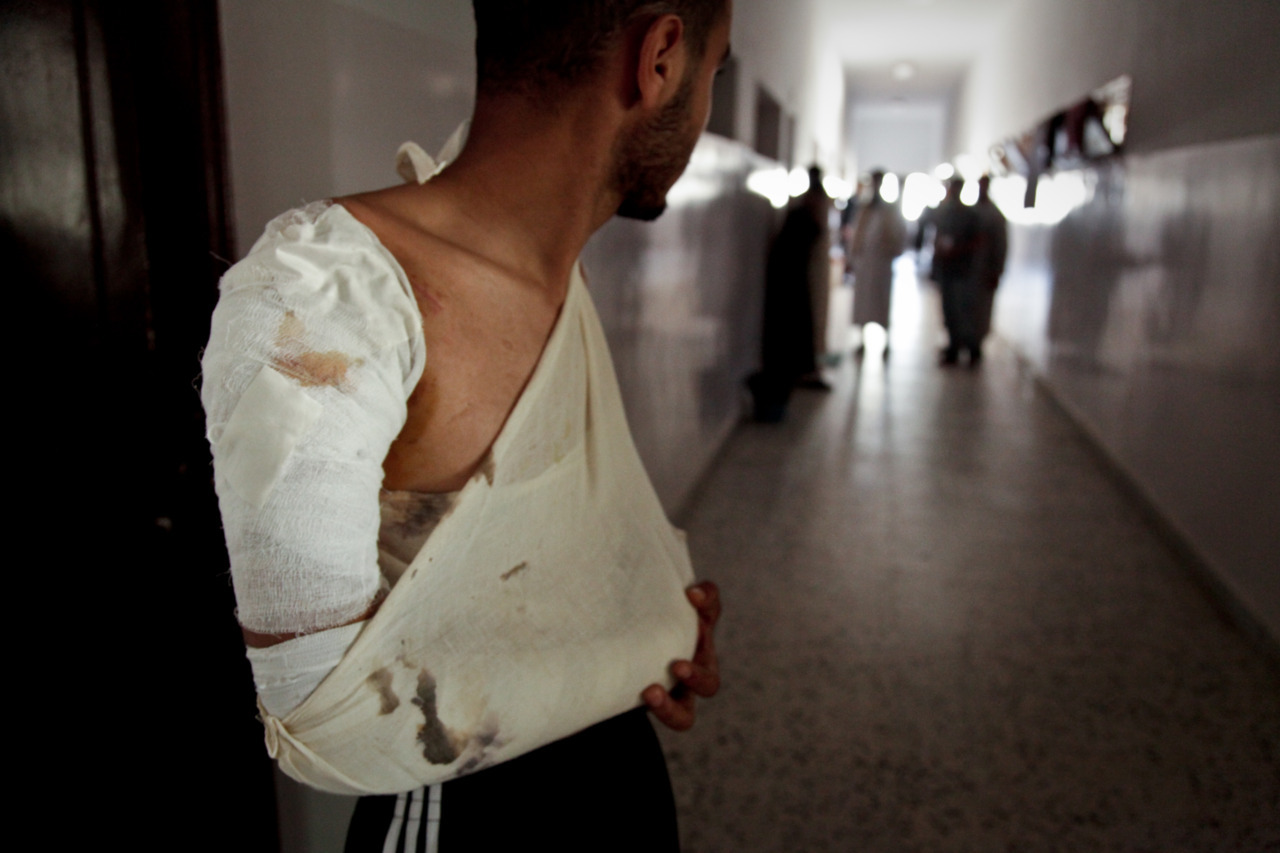The Times
Jerome Starkey in Misrata
Some died clutching lucky charms, with dollar bills and identity documents stashed inside their uniforms. Their graves are marked with numbers, written in felt-tip, on small wooden posts in the dunes.
Others died with nothing, their bodies burnt, broken or decomposed beyond recognition. Their wooden posts are blank. In all, more than 500 soldiers who died fighting for Colonel Gaddafi in Libya’s civil war now lie in North Africa’s newest war grave.
“At first we stored some bodies in refrigerated trucks, because we thought their families would collect them,” said Sheikh Abdul Hafeed abu Grain, the rebel cleric in charge of burials. “But eventually there were too many.”
The seven straight rows of graves have elevated Misrata — the besieged rebel city 120 miles east of Tripoli — to the unenviable ranks of Tobruk and El Alamein, towns synonymous with cemeteries from Second World War campaigns.
After months of relentless shelling and street-to-street tank attacks, not everyone in Misrata wanted to afford the perpetrators the dignity of a proper burial. Some rebels have paraded bodies around the city in triumph. There are unconfirmed reports — which the rebels deny — that bodies were dumped at sea. Some corpses, rebel officials admit, were buried in unmarked graves before the cemetery was created.
Now, though, the rebels are determined to show that they are better than Gaddafi’s men. “The young fighters are co-operating, because they are bringing the bodies here,” Sheikh Grain said. “We treat them like this because we are Muslims and it’s what we believe in.”
Despite their hatred of Colonel Gaddafi, the rebels are acutely aware that the men they call their enemies are also, mostly, their countrymen. “We don’t consider the people who fought against us as our enemies,” Sheikh Grain said.
“Gaddafi took advantage of the people fighting against us. They thought they had come to save Misrata from invaders and crusaders. That’s what he told them. They were cut off from the real world and tricked.”
Of the 505 recorded dead, Sheikh Grain said that just 318 had been identified by documents on their bodies. Some estimate the real number of Gaddafi’s troops killed in Misrata to be five or six times higher. “These are only the bodies they left behind,” he said.
A fortnight ago, bodies arrived by the truckload, the caretakers said. Last week they arrived in ones and twos. The numbers had decreased, they said, since the rebels consolidated their positions outside the city and Nato airstrikes had decimated Colonel Gaddafi’s lines.
Most of the bodies were buried on their own, although some were buried together. The known lie next to the unknown. All of them were wrapped in shrouds, sprinkled with scented powders and blessed, before being laid in wooden caskets covered with sand and a crust of concrete. “They lie on their sides, facing Mecca,” said Salem Mohammad, a caretaker.
A civil engineer, who introduced himself as Mr Ali, now keeps a list of the dead at the cemetery. He said there were more graves for Christians killed during the three-month siege. The numbers on the wooden posts correspond to the names on his list and he said he planned to publish it when the war was over.
He photographs the faces of the dead to help relatives identify loved ones who had no documents.
“Some of them were military people, we can see it from their faces,” he said. “But some were simple people who looked like farmers and shepherds.”
Volunteers have almost finished building a breeze-block wall around the cemetery, which slopes towards the sea, where Nato warships are visible on the horizon. An onshore breeze has already started eroding the sand underneath the concrete.
“What we have done here is temporary, hopefully we will improve it when all this [fighting] is over,” Sheikh Grain said. “Or maybe we will return the bodies to the families.”
In the meantime he is cataloguing the dead men’s possessions, mostly watches, coins and gold jewellery and — sheathed in tiny, worn leather pouches — their not-so-lucky charms.



